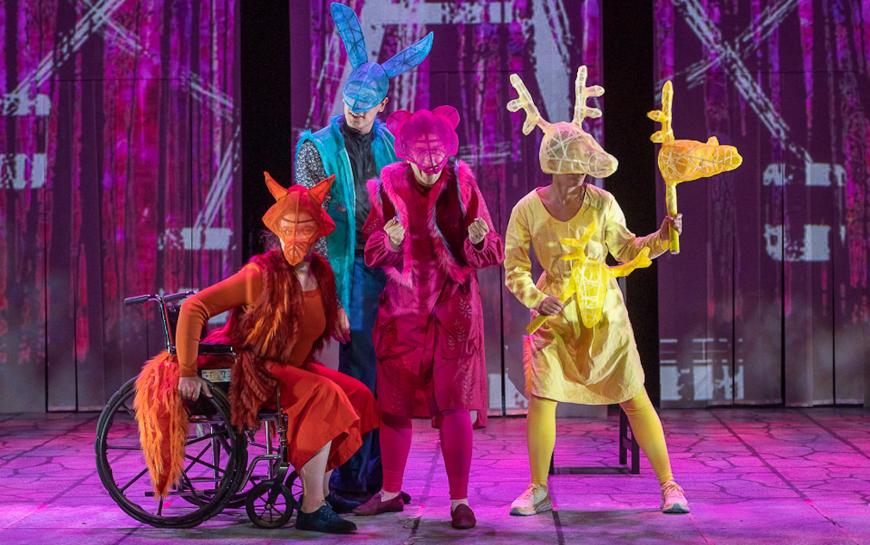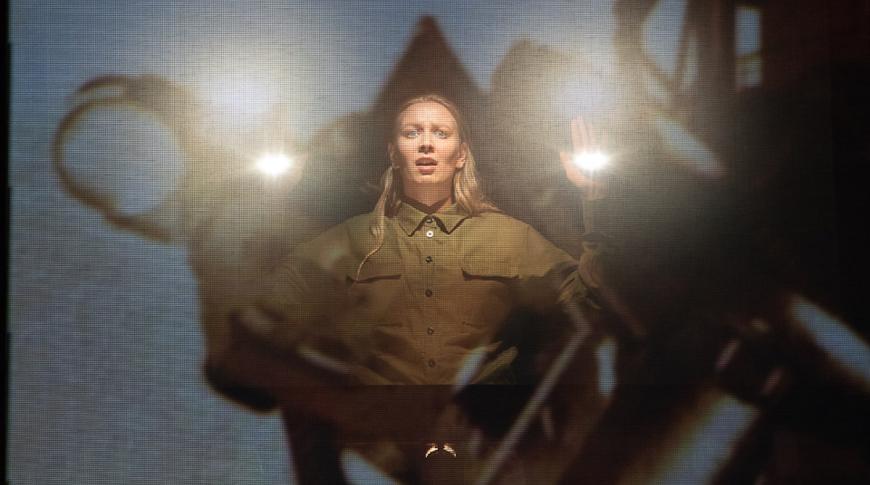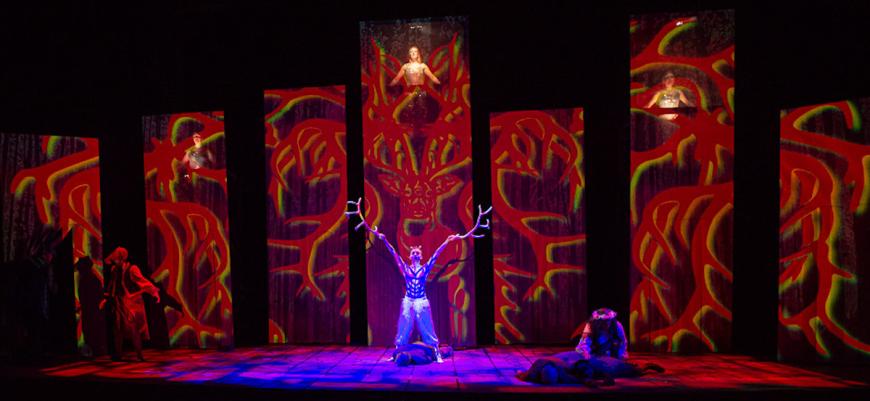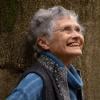
The opera All the Truths We Cannot See: A Chernobyl Story began its life nearly six years ago as author Glenda Dawn Goss’s project, and it has arrived to the stage at a tragically relevant time. As a story centered on the Soviet Era nuclear disaster, the production feels heavier even than it would have otherwise as Russia continues its invasion of Ukraine.
Made into an opera in 2018 by Finnish composer Uljas Pulkkis, this piece is finally on its feet as a joint production between the Sibelius Academy and University of Southern California Thornton School of Music, involving singers in both schools and a shared production design. Having premiered March 15 in Helsinki, it ran in Los Angeles April 21–24 at University of Southern California’s Bing Hall.
Goss and Pulkkis attempted to walk a line between myth and historical fiction that ultimately has buckled under them. A cast of cheeky wild animals interweaves a story of people surrounding the Chernobyl accident in a way that is meant to blur the line between folktale and reality that only really succeeds in reducing the human characters to uncompelling archetypes. The most sympathetic character — sung with wonderful emotional clarity by soprano Lily Smith — is the Snow White-esque biologist Svitlana Fodorova. While she doesn’t escape this character simplification, her fantastical motherly relationship with the animals of the forest elicits an interesting dissonance between the modern and mythic that seems to have been the intent across the board.

There are magical moments that carry this central dissonance well, but I found myself more often caught up in the uncomfortably quick pace of plot and character information. Many scenes had the unfortunate flavor of a soap opera: the evil new director of the nuclear power plant meets with the ambitious engineer (who was against her promotion, gasp!) and tells her he going to marry her hated naturalist sister, who is now (surprise, surprise) pregnant!
I cared much more about the Silver River, sung by Sun Hyeong Kim, Megan Schulze, and Lydia Brown, as a fantastical entity whose ancient role as a life-bringer now, unstoppable as a god, brings radioactive poison downstream. This many-headed characterization of the river in expressed the incalculable loss and the impossible situation brought about by nuclear fallout more truly than the one-dimensional human web of conflict.

The premise of bringing elements of folktales, like the unhuntable white stag and magical grandmother Babusya, into the realm of recent disaster has wonderful potential for deepening our sense of the magnitude of this loss by placing it among the likes of a biblical plague. It is a difficult balance to strike artistically, especially because it would be damaging to diminish the reality of what happened and the continued impact it has on people still living. I would say the creators played it safe, but at the cost of lessening the meaning of the presence of those mystical elements.
Pulkkis writes well-crafted music in a late-Romantic style. Singers are never covered, there is motivic legibility, and scary music happens when Reactor Four is mentioned. There is a lot of dramatic handholding, which lends itself well to supporting a more straight-ahead interpersonal drama, but the music is rarely expansive.
This is a story, a recent history, where the loss of life is matched and overtaken by the loss of livability in such a large place, and I was missing that sense of environment. Where place surfaced — in the arias of the River and in the calm before the storm where Svitlana naps under the moon with a mystical white fawn — I felt the most unified messages of the piece. I wish I had felt as much for the human characters.






